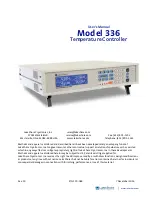
NOVA electronics Inc.
MCX514 -
30
-
30
-
■
Example of Parameter Setting (Partial S-curve Acceleration / Deceleration)
The figure shown below is the example of partial S-curve acceleration that reaches to 10kpps in 0.2 seconds by parabolic
acceleration and then reaches from 10kpps to 30kpps in 0.2 seconds by acceleration on a straight line, finally reaches from 30kpps
to 40kpps in 0.2 seconds by parabolic acceleration.
To simplify a calculation, suppose the initial speed is 0.
The acceleration increases to the first 10kpps in 0.2 seconds by parabolic acceleration on a straight line, and this integral value
(area indicated by diagonal lines) corresponds to the rising speed 10kpps of the first parabolic acceleration. Therefore, the
acceleration at 0.2 seconds is 10k×2
/
0.2
=
100kpps/sec and the jerk is 100k
/
0.2
=
500kpps/sec
2
.
Fig. 2.2-13 Example of Partial S-curve Acceleration / Deceleration Driving
However the initial speed cannot be 0, the initial speed SV must be set the value larger than 0. In partial S-curve acceleration /
deceleration, the initial speed SV should be the value more than a square root of acceleration AC.
Thus, with the acceleration as shown in Fig. 2.2-13, parameter setting of partial S-curve acceleration / deceleration driving is
shown below.
Mode setting
WR3 ← 0004h
Mode setting of WR3 register
Jerk
JK = 500000
Set jerk for the section of parabolic acceleration (S-curve).
Acceleration
AC = 100000
Set Acceleration for the section of linear acceleration.
Initial speed
SV = 400
Drive speed
DV = 40000
Drive pulse number
TP = 40000
Set when fixed pulse driving is performed.
















































